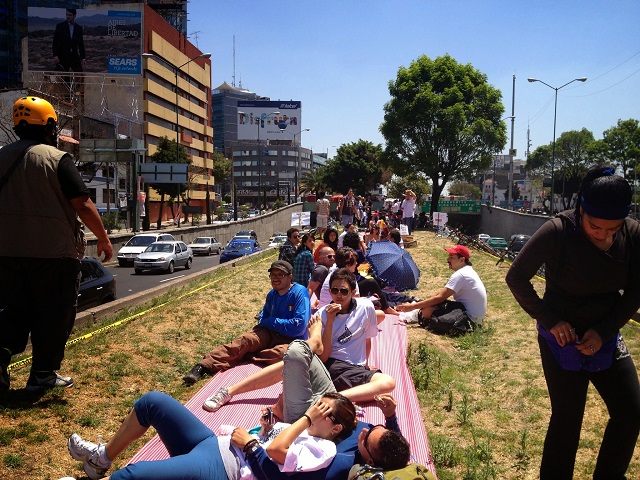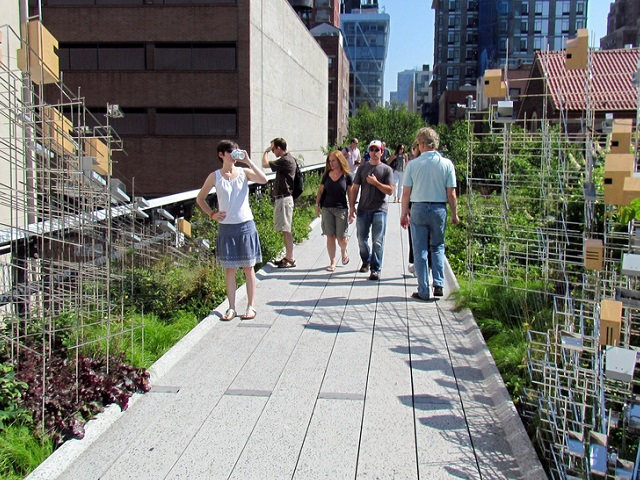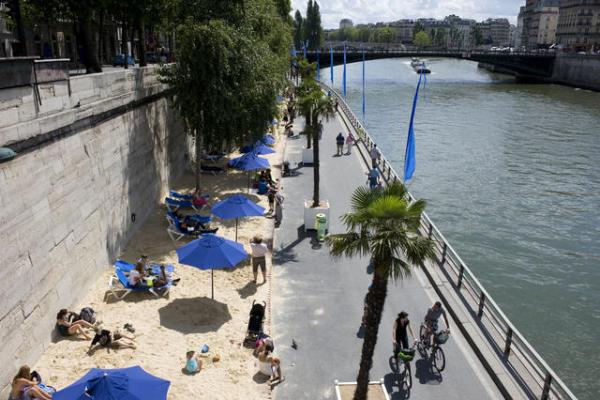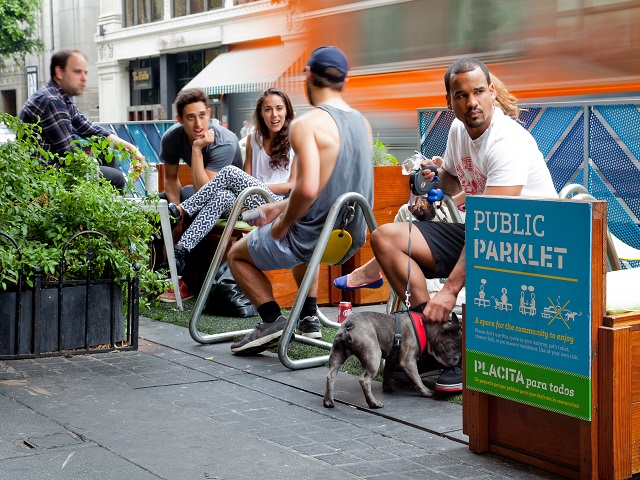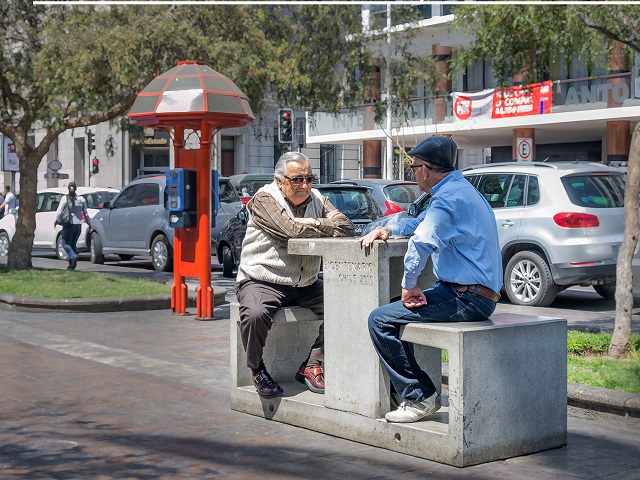Nossa Cidade (“Our City”), from TheCityFix Brasil, explores critical questions for building more sustainable cities. Every month features a new theme. Leaning on the expertise of researchers and specialists in WRI’s sustainable urban mobility team in Brazil, the series will feature in depth articles on urban planning, sustainable mobility, gender, resilience, and other key themes for sparking more sustainable development in our cities.
In the late 19th century, the car emerged as a promise of freedom and independence. Could anyone have imagined at the time that after more than a century of development, that we would now be moving the opposite direction, returning streets to their main function—as public spaces for people?
Many public areas have been gradually forgotten—no longer safe living spaces that move people. In order for cities to be vibrant and safe places, we need to think of them as systems of interdependent parts and complex connections, as interactive and social spaces. Reclaiming urban spaces for people is part of how we can humanize our cities and make our streets more communal. Public spaces are often more than anonymous places that can be replaced with one another: the meetings and exchanges that occur here affect our relationships with each other, giving meaning to our communities and urban landscapes.
Previously in our series, we talked about the role that public spaces play in cities as vibrant centers of social interaction, economic activity, and urban greenery. Now, we’re taking a look at some examples of these spaces and how they’ve become vital to the communities they serve. These initiatives have changed their local communities, returning the streets to whom they rightfully belong: people.
The High Line, New York City
The High Line in New York is often considered one of the greatest examples in the world of how idle urban space was revitalized. Built on an unused railway, the elevated park has turned an area of New York once full of violence and crime into one of the liveliest public areas of the city. The initial proposal was to demolish the old railway. However, Friends of the High Line was founded to advocate for preserving the railway. With plenty of greenery and pedestrian infrastructure, the park stretches over 2.3 km in one of the busiest areas of New York—on the west side of Manhattan—and attracts millions of visitors every year. The High Line is an iconic example of how people can reuse neglected parts of the city to improve quality of life for local residents.
Banks of the Seine, Paris
Revitalization of the Seine River waterfront in Paris, Berges de la Seine, began in 2010 with a series of public consultations and a goal of returning the river to residents. A stretch of land about 2.5 kilometers long between the Pont Royal and the Pont de l’Alma was closed to cars and re-oriented toward people. The project has radically changed the waterfront by implementing sports facilities, art installations, space of musical performances, restaurants, and open space for leisure. Furthermore, the Jardin Flottant floating garden of 1,800 square meters connects five islands to each other. Each of these man-made islands has a different identity and varying vegetation, representing the Seine’s natural species. Blogger and journalist Renata Rocha Inforzato maintains an online guided tour of the waterfront, documenting how this space contributes to the vibrant center of the French capital.
Balade sur les nouvelles berges de Seine by mairiedeparis
People St, Los Angeles
People St is a program created by the Los Angeles Department of Transportation that allows residents—through partnerships and community centers—to request parklets, plazas, and bicycle corrals in their communities. By providing pre-approved models, People St cuts out the bureaucracy that typically stalls these projects. Plaza projects account for the largest share of their programs, and two successful case studies have emerged since the launch of the initiative: the Sunset Triangle Plaza, created in 2012 in Silver Lake, and the NoHo Plaza in North Hollywood. These projects often involve closing the street to cars, completely transforming streets into people-oriented gathering spots with tables, chairs, umbrellas, greenery, and more.
Tactical Urbanism
Two men sit at a makeshift concrete table in Antofagasta, Chile, where tactical urbanism is a growing trend. Photo by Pablo Guerra/Flickr.
Tactical urbanism brings several possibilities under one umbrella term. The movement encourages residents to make small interventions to city spaces to improve public spaces. These often low-cost projects are designed to transform empty spaces, and initiatives may range from something relatively simple like revamping a space in disuse, to constructing a Parklet. However, the goal is the same: to return street space to people .
One example is the Better Block, which began in Dallas five years ago. Using cheap and recycled materials, the group turned one block in the Oak Cliff neighborhood into a pleasant and attractive environment. Musicians, artists and local merchants were invited to join the initiative, which installed bike paths, street furniture, vegetation and temporary kiosks, increasing space for people and decreasing space for cars. The initiative has changed the face of the neighborhood, from empty and seldom used to cheerful and vibrant.
Facilitating simple changes, tactical urbanism encourages people to take ownership of their communities and rethink how their meetings and exchanges enable vibrant public spaces. In Brazil, two examples are Passanela and Oficina de Mobilario, a furniture workshop organized by Cidade Ativa. Passanela produced a skywalk over Rebouças Avenue in São Paulo, in order to increase pedestrian accessibility. The Cidade Ativa workshop did the same with the Steps of Alves Guimarães, adding street furniture to areas around the stairs, creating a space where people can stop to rest and chat.
Streets As Public Spaces
Long-term planning as well as rapid and inexpensive transformation strategies can be powerful tools to encourage public participation and improve quality of life. When it comes to public spaces, we think of parks, squares and green areas, often forgetting streets, which collectively are usually the largest public space in cities. The way in which streets are used, for the movement of people or vehicles, will define the environment around them. The first step in making cities safer and more pleasant places to live is to get residents to view their streets as public spaces.
This article was originally published in Portuguese on TheCityFix Brasil.
